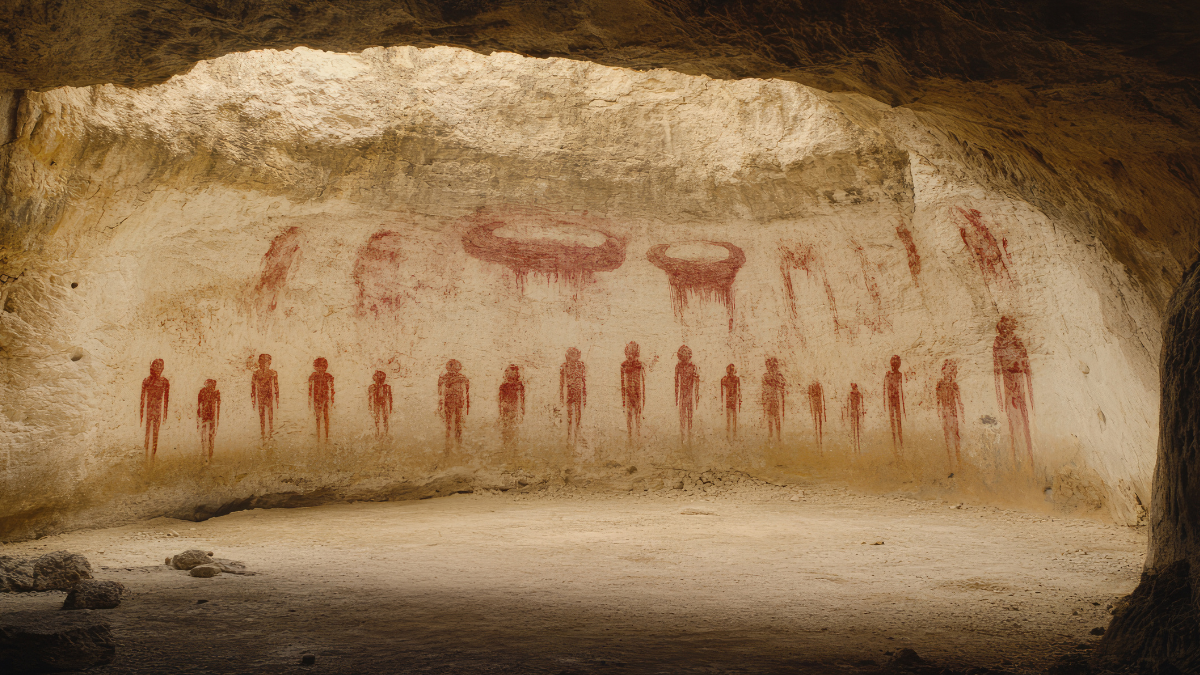BLOG
Ancient Artz: A Journey Through the Roots of Human Creativity

Art is more than just an aesthetic expression; it is the soul of civilization. Long before modern museums and digital portfolios, ancient cultures around the world created mesmerizing visuals and structures that told stories, preserved traditions, and reflected the divine. The term “Ancient Artz” encapsulates a rich tapestry of these creative expressions from bygone civilizations, offering a window into humanity’s earliest attempts to understand and shape the world through visual form.
What Is Meant by “Ancient Artz”?
“Ancient Artz” is a stylized phrase that refers to artistic works created by early civilizations, typically before the fall of the Roman Empire (476 AD), although the definition can extend to include works up to the Middle Ages depending on context. The term “artz” adds a modern flair, often used in digital and branding contexts to combine tradition with a contemporary twist.
From prehistoric cave paintings in France to the golden masks of Egyptian pharaohs, ancient artz encompasses a vast timeline and geographical expanse. Despite the differences in medium, style, and purpose, one thread remains constant: these works were created not just for decoration, but to convey beliefs, honor deities, document history, and express identity.
The Origins: Prehistoric and Paleolithic Art
The earliest known examples of art date back to the Upper Paleolithic period, around 40,000 to 10,000 BCE. Discovered in locations such as Lascaux (France) and Altamira (Spain), these cave paintings depict animals like bison, horses, and deer. Created with natural pigments like ochre and charcoal, these images were likely linked to rituals or hunting magic.
The Venus figurines, such as the Venus of Willendorf, showcase early attempts at sculptural representation. These small, exaggerated female figures may have symbolized fertility or played a role in spiritual practices.
Such examples of prehistoric artz reveal an emerging sense of symbolic thought, abstract reasoning, and an appreciation for visual storytelling.
Ancient Egyptian Art: Eternal Elegance
Egyptian art is one of the most iconic forms of ancient artz, renowned for its distinctive style, precision, and symbolism. Dating back to around 3000 BCE, Egyptian art was deeply religious and ceremonial. Wall reliefs, frescoes, and statues found in temples and tombs were meticulously crafted to ensure a safe journey to the afterlife.
The use of hieroglyphics, stylized profiles, and color symbolism gave Egyptian art a unique aesthetic. Gods and pharaohs were often depicted larger than others to signify importance. Gold, lapis lazuli, and precious stones were widely used in funerary objects, with the mask of Tutankhamun being a notable example of this grandeur.
Mesopotamian and Sumerian Art: Civilization’s Cradle
Often considered the cradle of civilization, Mesopotamia gave birth to some of the earliest urban societies, such as Sumer, Akkad, Babylon, and Assyria. The artz of this region date back to 3500 BCE and include cylinder seals, relief carvings, and monumental architecture like ziggurats.
One iconic piece is the Stele of Hammurabi, which not only bears the king’s image but also inscribes one of the first legal codes in human history. Mesopotamian art was functional and narrative, aiming to document social order, warfare, and divine authority.
Greco-Roman Art: Beauty, Idealism, and Realism
No discussion of ancient artz would be complete without the profound influence of Greek and Roman art. The Greeks revolutionized artistic standards by introducing naturalistic human forms, dynamic movement, and proportionality. The Parthenon sculptures, created under the direction of Phidias, are celebrated for their anatomical perfection and balance.
Greek art transitioned from the archaic smile of early statues to the contrapposto stance of classical sculpture, epitomized by works like Discobolus and Venus de Milo.
The Romans, inheriting and expanding upon Greek traditions, emphasized realism and portraiture. Roman mosaics, frescoes (like those in Pompeii), and busts of emperors and statesmen reflect both artistic skill and a desire to immortalize individuals.
Ancient Asian Artz: Harmony, Nature, and Spirituality
Across the East, ancient artz took on different meanings and materials. In China, art during the Shang and Zhou dynasties (1600–256 BCE) included intricate bronze vessels, jade carvings, and early calligraphy. The Terracotta Army of the Qin Dynasty stands as a monumental artistic and political statement.
In India, early art was shaped by religious narratives and spirituality. From the Indus Valley seals to the intricate carvings of the Ajanta Caves, Indian art is rich in symbolism, often reflecting Buddhist, Hindu, and Jain philosophies.
Meanwhile, Japanese ancient artz, such as Jomon pottery, are among the oldest ceramics in the world, characterized by elaborate patterns and cord-marked designs.
Indigenous Artz: Voices of the Land
Across the Americas, Australia, and Africa, indigenous art traditions flourished long before colonial contact. In Mesoamerica, the Maya and Olmec cultures crafted colossal heads, pyramids, and glyph-inscribed artifacts. In Africa, the Nok culture of Nigeria created terracotta sculptures dating back to 1500 BCE.
Aboriginal art in Australia, including rock paintings and dot art, is one of the oldest continuous art traditions on Earth, with spiritual significance tied deeply to the “Dreamtime” stories of creation.
Legacy and Modern Influence
Though separated by time and space, the collective body of ancient artz continues to inspire contemporary creators. Architects borrow columns from Greek temples. Designers reinterpret Egyptian motifs in fashion and interiors. Artists study ancient proportions and symbols to embed deeper meaning into modern works.
The resurgence of interest in ancient techniques and styles, especially in digital formats, has given rise to new platforms that celebrate this historical wealth. From 3D scanning of ruins to AI-enhanced reconstructions, the ancient artz are not just relics but living sources of creativity.
Conclusion
Ancient artz are more than historical artifacts—they are human legacies carved in stone, painted on cave walls, and forged in metal. They remind us of our origins, our shared instincts to create, commemorate, and communicate. Whether preserved in museums or etched in remote caves, these works continue to resonate across time, connecting us with our ancestors through the universal language of art.
BLOG
Unlocking the Secrets of LeahRoseVIP: A Comprehensive Guide

In a world where social media reigns supreme, one name shines brightly: LeahRoseVIP. With her vibrant personality and captivating content, she has carved out a unique space that resonates with millions. This comprehensive guide unveils the journey of LeahRoseVIP from her humble beginnings to becoming an internet sensation. Buckle up as we explore the secrets behind her success and what it takes to thrive in today’s online world.
The Early Years of LeahRoseVIP
LeahRoseVIP was born into a world where creativity flourished. From a young age, Leah exhibited an innate talent for storytelling and expression. Her early years were marked by experimentation with various art forms, from drawing to crafting.
At school, she often stood out among her peers. Teachers noted her creative flair and encouraged her to pursue artistic endeavors. Leah embraced this support, exploring different mediums that would later shape her unique online persona.
They introduced her to social media platforms at an early age, sparking the idea of sharing her journey with others. This seed planted the initial desire that would eventually blossom into something much larger.
As Leah transitioned through adolescence, she began documenting moments of inspiration—capturing life as it unfolded around her. Each post became a stepping stone toward building what we now know as LeahRoseVIP.
The Rise to Fame on Social Media
LeahRoseVIP’s journey on social media is nothing short of remarkable. Starting with simple posts, she quickly captured the attention of countless followers. Her authenticity and relatable content resonated deeply with audiences.
Engaging visuals and captivating stories helped her stand out in a crowded digital landscape. Leah’s knack for connecting with fans created a loyal community around her brand.
Strategic use of platforms like Instagram and TikTok propelled her into the spotlight. With each post, her follower count grew exponentially, turning casual viewers into dedicated supporters.
As trends evolved, Leah adapted seamlessly while staying true to herself. This flexibility allowed her to maintain relevance amidst ever-changing algorithms and user preferences.
Her rise illustrates the power of genuine interaction in building an online presence that resonates long-term.
Brand Collaborations and Partnerships
LeahRoseVIP has transformed the landscape of influencer marketing through strategic brand collaborations. Her partnerships are not just about promotions; they reflect a genuine alignment with brands that resonate with her audience.
Working with fashion lines, beauty products, and lifestyle companies, LeahRoseVIP showcases these brands in authentic ways. Each post feels like a natural extension of her personal style rather than a forced advertisement.
The success of these collaborations lies in Leah’s ability to engage her followers. She creates content that is relatable yet ambitional, enticing audiences to explore the featured products.
Moreover, she often emphasizes sustainability and ethical practices when choosing partners.
By fostering relationships built on trust and mutual respect, LeahRoseVIP continues to elevate both herself and the brands she collaborates with into new heights of popularity and relevance.
Behind the Scenes: A Day in the Life of LeahRoseVIP.
A typical day for LeahRoseVIP begins early. She starts with a refreshing morning routine that includes meditation and journaling.
Once she is energized, it is all about content creation. Whether it is shooting videos or snapping photos, her creativity flows effortlessly. Each piece is carefully curated to resonate with her audience.
After filming, Leah spends time engaging with followers on social media platforms. Responding to comments and messages is crucial for building connections. In between shoots, she collaborates with brands.
The evenings are reserved for winding down and reflecting on the day’s achievements. A mix of work and personal time keeps her grounded while fueling future inspiration.
Every moment contributes to the vibrant persona that fans adore—an exciting blend of work and passion in action.
Tips for Building an Online Presence like LeahRoseVIP.
Building an online presence like LeahRoseVIP requires authenticity. Showcase your true self. Share experiences and values that resonate with your audience.
Visual appeal matters too. Invest in good photography or videography to elevate content quality. Esthetic feeds attract more followers.
Consistency is crucial for growth. Post regularly across platforms while maintaining a cohesive theme or message that represents you well.
Don’t underestimate the power of collaboration. Partner with other influencers or brands to expand reach and tap into new audiences effortlessly.
Stay adaptable as trends often change in the digital landscape; flexibility will help you thrive long-term in this dynamic environment.
Plans and Goals for LeahRoseVIP
LeahRoseVIP is continuously evolving, with exciting plans on the horizon. Expanding her brand beyond social media is a primary focus. New product lines are in development, combining fashion and lifestyle.
Collaboration with emerging artists and brands could be next. This not only broadens her reach but also infuses fresh creativity into her projects.
Engaging more deeply with fans through live events and interactive sessions holds great potential too. Leah aims to create memorable experiences that connect on a personal level.
Educational content may soon feature prominently. Sharing insights about building a digital presence can inspire others to pursue their passions online. These future endeavors reflect Leah’s commitment to growth while fostering community engagement.
Conclusion
LeahRoseVIP has carved out a unique space in the online world, blending authenticity with a captivating persona. From her early years to becoming a social media sensation, she embodies what it takes to thrive in today’s digital landscape.
Her impressive collaborations and partnerships showcase her versatility and appeal within various industries. The behind-the-scenes glimpse into Leah’s daily routine reveals the dedication required for success while managing an engaging online presence.
For anyone looking to build their own brand like LeahRoseVIP, there are valuable lessons to learn from her journey. Consistency, creativity, and connecting with your audience are vital elements that can lead you on a similar path.
With ambitious goals ahead, LeahRoseVIP continues to inspire others through her work ethic and innovative spirit. As she evolves further in her career, fans eagerly anticipate what lies ahead for this remarkable influencer.
BLOG
MP3Juices: Everything You Need to Know About This Popular MP3 Downloader

In the digital age, access to music has become more diverse and convenient than ever before. Some users still prefer to download their favorite tracks for offline listening. That’s where platforms like MP3Juices come into the spotlight.
If you’ve ever searched for a free way to download MP3 music files online, chances are you’ve come across MP3Juices. It’s one of the most popular online MP3 downloaders that lets users convert music and video links into MP3 files, which can then be saved to any device. In this guide, we’ll take a deep dive into everything you need to know about MP3Juices — how it works, its features, legality, alternatives, and safety concerns.
What Is MP3Juices?
MP3Juices is a free online platform that allows users to search, convert, and download MP3 audio files from video streaming websites, primarily YouTube. It’s essentially a YouTube to MP3 converter with an integrated search engine that provides access to millions of tracks without the need for registration or software installation.
Users can either enter a search query (like a song title or artist name) or paste a URL from a video hosting site. Within seconds, MP3Juices generates a downloadable MP3 file, offering options to preview or download the song directly.
Key Features of MP3Juices
MP3Juices is popular for several reasons. Below are some of its main features:
✅ Free to Use: No sign-up or payment is required.
✅ No Software Needed: Everything runs through the web browser.
✅ Integrated Search Engine: You can search songs by title, artist, or keywords.
✅ Supports YouTube and Other Platforms: While YouTube is the main source, MP3Juices may also support platforms like SoundCloud, Dailymotion, Vimeo, and others.
✅ Fast Conversion: Converts videos to audio within seconds.
✅ Mobile-Friendly: Works well on Android and iOS browsers.
How to Use MP3Juices
Using MP3Juices is simple and intuitive. Here’s a step-by-step guide:
Go to the Website: Open your browser and navigate to MP3Juices.cc (note that there are many clones and similar domains).
Enter Your Query or URL:
Alternatively, paste a YouTube URL or other video link.
Search and Wait: MP3Juices will search for the content and begin the conversion.
Choose a Result: Once results are displayed, click “Download” next to the version you prefer.
Download the File: After conversion, click the final download button, and the MP3 file will be saved to your device.
Is MP3Juices Legal?
The legality of using MP3Juices depends on a few factors:
Copyrighted Content: Downloading copyrighted material without permission is illegal in most countries. If you use MP3Juices to download songs that are protected by copyright (which most commercial music is), you’re likely infringing on intellectual property rights.
Personal Use vs. Distribution: Some argue that downloading for personal use falls into a legal gray area, though that’s not a guarantee.
Terms of Service Violations: Downloading YouTube videos using third-party tools like MP3Juices violates YouTube’s terms of service.
In short, while MP3Juices itself is not illegal to visit, the content you choose to download might be.
Is MP3Juices Safe?
Safety is a valid concern when using free downloading websites. Here’s what you should know:
Pros:
MP3Juices does not typically ask for personal information.
It doesn’t require downloading any additional software.
Cons:
Ads and Pop-ups: Many MP3Juices mirrors are loaded with ads, pop-ups, or misleading download buttons.
Clone Sites: Not all “MP3Juices” websites are legitimate. Some are fake and host malware.
Risk of Viruses: Always have antivirus software enabled when using such platforms.
Tips for Staying Safe:
Use an ad blocker and antivirus protection.
Stick to the main domain (mp3juices.cc or similarly well-known ones).
Avoid clicking on suspicious links or buttons.
Why Do People Still Use MP3Juices?
Despite the legal gray areas and security concerns, millions still use MP3Juices. Here’s why:
Offline Access: Some people live in areas with limited internet connectivity and prefer offline music access.
No Subscription Needed: Unlike Spotify Premium or Apple Music, MP3Juices is free.
Customization: Users can create custom playlists without using traditional music platforms.
Simplicity: The interface is straightforward and accessible to all age groups.
Device Compatibility: Works on almost any device with a browser — Android, iPhone, Windows, and macOS.
Alternatives to MP3Juices
YTMP3.cc – Clean interface and fast conversion.
FLVTO.biz – Allows MP3 and MP4 downloads from YouTube.
320YouTube – Offers high-quality 320kbps audio files.
SnapInsta.app – Supports YouTube and Instagram downloads.
YouTube Premium – For those who want an official, ad-free experience with offline download features.
Ethical Alternatives
If you prefer to stay on the right side of copyright law, consider these ethical options:
Spotify Free/Premium
YouTube Music
Apple Music
Deezer
SoundCloud (Free Tracks)
These platforms offer extensive music libraries, curated playlists, and support for artists.
Final Thoughts
MP3Juices continues to be a popular solution for downloading music from YouTube and other sources — especially among users who need offline access without a subscription fee. If you choose to use MP3Juices, it’s vital to understand the risks and responsibilities that come with it.
In a world increasingly moving towards legal streaming services, MP3Juices remains a go-to option for millions who want fast, free, and accessible music downloads. However, users should proceed with caution — both legally and technically — to avoid potential pitfalls such as malware or copyright infringement.
Whether you’re a casual listener, a content creator needing background music, or someone managing data costs by downloading files, MP3Juices offers a compelling option — just be sure to use it wisely.
BLOG
PlayStation Plus PSN Outage Compensation: What You Need to Know

When you’re paying for a premium gaming subscription like PlayStation Plus, every moment of downtime can feel like a disruption to a service you’ve paid for. Sony’s PlayStation Network (PSN) is typically reliable, but when an outage occurs, especially an extended one, users often search for answers regarding PlayStation Plus PSN outage compensation.
In this detailed guide, we’ll explore everything you need to know about PSN outages, how they affect PlayStation Plus members, whether Sony offers compensation, how to request it, and how to safeguard your subscription experience.
What Is PlayStation Plus?
PlayStation Plus is Sony’s flagship subscription service that provides players with access to:
Online multiplayer gaming
Free monthly games
Exclusive discounts
Cloud storage for game saves
Access to classic titles via PlayStation Plus Extra and Premium tiers
Because it’s a paid subscription, customers expect continuous and reliable service. A PSN outage, even for a few hours, can disrupt multiplayer sessions, prevent access to downloaded content, or block cloud save synchronization.
What Is a PSN Outage?
A PSN outage refers to a disruption in Sony’s PlayStation Network services. This may affect:
Account login
Multiplayer gaming
PlayStation Store access
Game downloads and updates
Cloud saves
Streaming from PS Now (if subscribed)
PS Plus features such as online co-op
Outages can be planned (maintenance) or unplanned (technical failures, cyberattacks, server overloads).
Historical PSN Outages
Sony’s most infamous outage happened in April 2011, when hackers compromised PSN and Qriocity services, affecting over 77 million accounts.
Sony responded with what became known as the “Welcome Back” program, which offered:
Two free games per user
30 days of free PlayStation Plus membership
Identity theft protection services in select regions
Since then, while Sony’s infrastructure has improved significantly, outages still occur due to:
Server maintenance
DDoS attacks
Regional technical failures
Software bugs introduced via system updates
Does Sony Offer Compensation for PSN Outages?
This is the question many users ask: Do I get PlayStation Plus PSN outage compensation if the network goes down?
The Short Answer: Not always, but sometimes.
Sony does not automatically offer compensation for every outage. Whether compensation is given depends on:
Duration of the outage
Scope (regional or global)
Severity of disruption
Public pressure or legal ramifications
Examples of Past Compensation
2011 PSN Outage – Users received free games and 30 days of PS Plus.
2014 Holiday DDoS Attack – Some users received 5 days of PS Plus extension as compensation.
2021 Minor Outages – No official compensation, despite user frustration.
So, while it’s not guaranteed, Sony has a precedent of offering compensation in significant cases.
What Kind of Compensation Can You Get?
If Sony does decide to issue compensation after a PSN outage, it may come in various forms:
1. Extension of PS Plus Subscription
A few extra days or even a full month may be added to your subscription to make up for the downtime.
2. Free Game Offers
During major outages, Sony may offer free games or credits to select users.
3. Store Credit
Some users have received PSN store credits, usually in small amounts ($5–$10), especially in class action settlement cases.
4. Discount Codes
Occasionally, Sony issues PlayStation Store discount codes following a major service interruption.
How to Request PSN Outage Compensation
If you’ve been affected by a PSN outage, and there is no automatic compensation issued, here’s what you can do:
Step 1: Check the Official PSN Status Page
Before taking any action, visit the official PlayStation Network Status Page to confirm the outage and see if there’s a timeline for restoration.
Step 2: Follow PlayStation Support on Social Media
Sony may communicate about outages, compensation, or updates via Twitter (@AskPlayStation) and other platforms.
Step 3: Contact PlayStation Support
You can reach Sony’s customer service to request a refund or subscription extension:
Go to PlayStation Support
Navigate to “Account & Security” > “PlayStation Plus”
Select “Contact Us” or initiate a live chat
Be prepared to provide:
Your PSN ID
Details of the outage (dates and duration)
Screenshots if available
Class Action Lawsuits and Legal Compensation
If an outage is significant enough—especially if user data is compromised—class action lawsuits may follow.
Free PSN content
Identity protection services
Reimbursement for identity theft costs
To stay informed about such opportunities:
Follow tech news outlets
Subscribe to class action legal newsletters
Monitor the PlayStation blog and Reddit communities
What to Do During a PSN Outage
Here are some things you can do while waiting for PSN to be restored:
Play offline games: Ensure your console is set as “Primary” to allow offline play.
Catch up on single-player titles
Manage game files and storage
Plan your next game purchases
Read, exercise, or engage in non-gaming hobbies
Outages, while frustrating, can offer a brief break from always-online pressure.
How to Protect Your PS Plus Subscription
Enable Auto-Downloads and Cloud Saves
This minimizes potential data loss during unexpected outages.
Monitor PSN Service Alerts
You can subscribe to receive notifications about service maintenance.
Check Outage-Tracking Sites
Sites like DownDetector provide real-time user reports of outages.
Keep Backups of Your Data
Especially if you’re a PS Plus Premium user using cloud storage.
Enable Two-Factor Authentication (2FA)
Outages sometimes occur due to security threats. Protect your account with 2FA.
How Much Do PSN Outages Impact Value for Money?
This depends on how frequently you play online games. For casual gamers, a few hours or even a day of outage may be inconsequential. But for competitive players or streamers, even an hour can be disruptive.
conclusion
While PlayStation Plus PSN outage compensation isn’t always automatic, Sony does have a history of addressing serious outages through:
Subscription extensions
Free content
Store credits or legal settlements
If you experience an outage that seriously disrupts your service, it’s worth reaching out to PlayStation Support. The more users who raise the issue, the more likely Sony is to take action.
In the meantime, understanding your rights, knowing the right channels to contact, and staying informed will help you navigate any disruptions smoothly.
-

 HEALTH1 week ago
HEALTH1 week agoMega-Personal.net Health Archives: The Ultimate Guide to Health Information and Resources
-

 FASHION23 hours ago
FASHION23 hours agoWhy Fashion Is Important to People: A Deep Dive Into Its Cultural, Psychological, and Social Impact
-

 NEWS2 weeks ago
NEWS2 weeks agoForestry Development Authority: Guardians of Our Forests
-

 BLOG5 months ago
BLOG5 months agoExploring the Revolutionary Potential of New Software 418DSG7
-

 CRYPTO2 weeks ago
CRYPTO2 weeks agoCrypto30x.com: A Comprehensive Investigation Into the 30X Returns Crypto Platform
-

 CRYPTO1 week ago
CRYPTO1 week agoLessInvest.com Crypto: A Comprehensive Guide to Smart Cryptocurrency Investing
-

 CRYPTO5 months ago
CRYPTO5 months agoWhich Crypto Has 1000x Potential? A 2025 Investor’s Deep Dive into the Next Crypto Explosion
-

 NEWS2 weeks ago
NEWS2 weeks agoTecnoregio News: Your Ultimate Guide to Innovation, Industry Updates, and Regional Technology Insights
